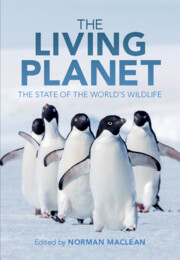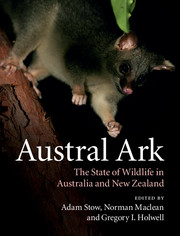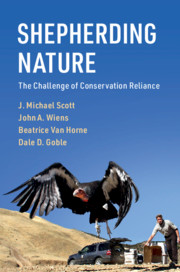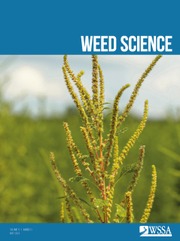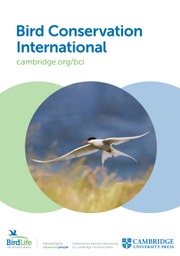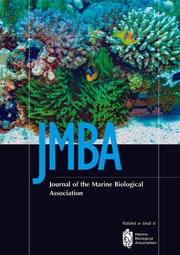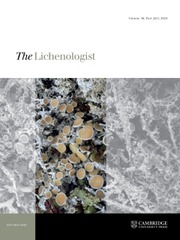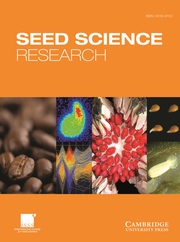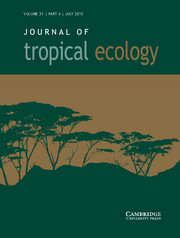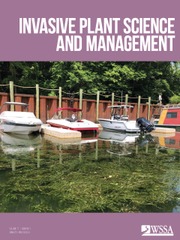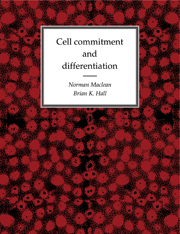The Living Planet
The State of the World's Wildlife
£90.00
- Editor: Norman Maclean, University of Southampton
- Date Published: April 2023
- availability: Available
- format: Hardback
- isbn: 9781108499828
£
90.00
Hardback
Other available formats:
Paperback, eBook
Looking for an inspection copy?
This title is not currently available on inspection
-
Since 1970, there has been an overall decline in wildlife populations in the order of 52%. Freshwater species populations have declined by 76%; species populations in Central and South America have declined by 83%; and in the Indo-Pacific by 67%. These are often not complete extinctions, but large declines in the numbers of animals in each species, as well as habitat loss. This presents us with a tremendous opportunity, before it is too late to rescue many species. This book documents the present state of wildlife on a global scale, using a taxonomic approach, and serving as a one stop place for people involved in conservation to be able to find out what is in decline, and the success stories that have occurred to bring back species from the brink of extinction - primarily due to conservation management techniques - as models for what we might achieve in the future.
Read more- The first book to present the current state of wildlife - globally - using a taxonomic approach
- Brings together renowned authors from around the world and many experts in their field, especially those affiliated with IUCN (International Union for the Conservation of Nature), the organisation that Red lists species
- Discusses the history and evolution of life on Earth, and presents the state of play for each of the major groups: flowering plants, non-flowering plants, fungi and other minor phyla, marine invertebrates, terrestrial invertebrates, fishes, amphibians, reptiles, birds, and marine and terrestrial mammals
Reviews & endorsements
'Highly recommended.' J. Organ, Choice
See more reviews'This book is a useful compendium and I recommend it particularly for teachers, nongovernmental organizations, and undergraduate conservation courses.' Rob Harcourt, The Quarterly Review of Biology
Customer reviews
Not yet reviewed
Be the first to review
Review was not posted due to profanity
×Product details
- Date Published: April 2023
- format: Hardback
- isbn: 9781108499828
- length: 446 pages
- dimensions: 251 x 177 x 28 mm
- weight: 0.9kg
- availability: Available
Table of Contents
1. Introduction and the evolution of life on earth Norman Maclean
2. Flowering plants Sara Oldfield and Lauren Gardiner
3. Bryophytes and Pteridophytes
Spore-bearing land plants Mary Gibby
4. Terrestrial mammals Alexis M. Mychajliw
5. Marine mammals: exploited for millennia, but still holding on Alexis M. Mychajliw and Thomas A. Jefferson
6. Birds Tristram Allinson
7. Reptiles Philip Bowles
8. Amphibians Phillip J. Bishop † , Sally Wren, Ariadne Angulo and Richard A. Griffiths
9. Freshwater fishes: threatened species and threatened waters on a global scale Peter B. Moyle and Robert A. Leidy
10. The amazing yet threatened world of marine fishes Mark A. Hixon and Brian W. Bowen
11. Insects Manu E. Saunders, Simon Leather †, Jenni Stockan and David Yeates
12. Marine invertebrates Alex David Rogers, Patricia Miloslavich, David Obura and Octavio Aburto-Oropreza
13. Non-insect terrestrial arthropods Gonzalo Giribet
14. Terrestrial invertebrates other than arthropods and molluscs Gonzalo Giribet
15. Non-marine Molluscs Robert H. Cowie, Benoît Fontaine and Philippe Bouchet
16. An account of the diversity and conservation of fungi and their close relatives Gregory Mueller and Jessica L. Allen
17. Simple life forms Norman Maclean
18. Assessing species conservation status: the IUCN red list and green status Molly Grace
19. Problems with the world`s ecosystems Matt W. Hayward
20. Conservation methods and successes Norman Maclean
21. What does the future hold for our planet and its wildlife? Norman Maclean
Index.
Sorry, this resource is locked
Please register or sign in to request access. If you are having problems accessing these resources please email [email protected]
Register Sign in» Proceed
You are now leaving the Cambridge University Press website. Your eBook purchase and download will be completed by our partner www.ebooks.com. Please see the permission section of the www.ebooks.com catalogue page for details of the print & copy limits on our eBooks.
Continue ×Are you sure you want to delete your account?
This cannot be undone.
Thank you for your feedback which will help us improve our service.
If you requested a response, we will make sure to get back to you shortly.
×
